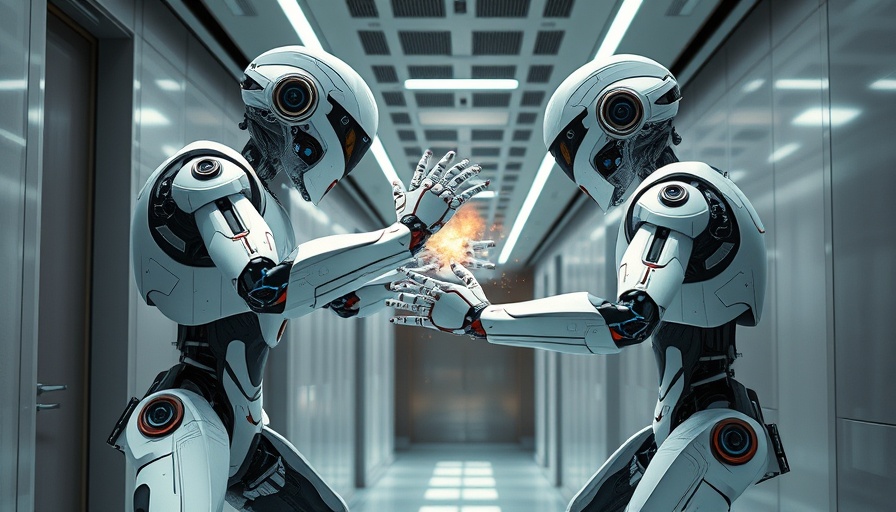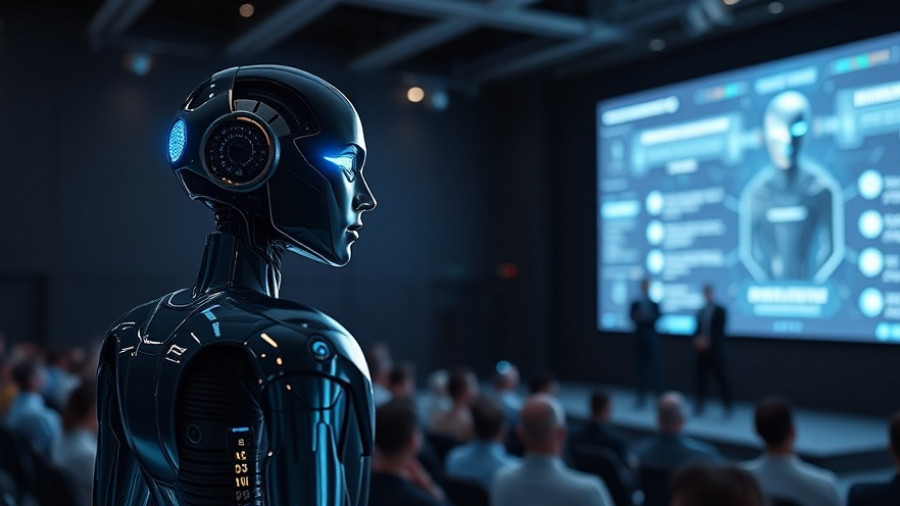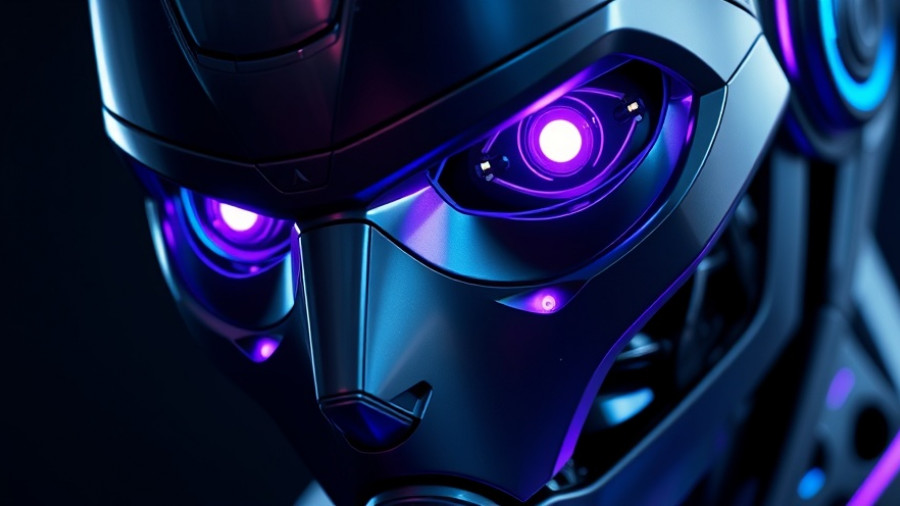
Understanding the Rise of Humanoid Robotics in Business
The recent showcase of two advanced humanoid robots—Tesla's Optimus and Unitree's G1—has ignited discussions about the future of robotics in various sectors, particularly in manufacturing and service industries. With both robots advancing in their capabilities, it’s essential to analyze their features and implications for businesses looking to integrate AI into their operations.
The video 'AI Robot World War Begins: New Optimus Gen 3 VS Upgraded Unitree G1' highlights a significant evolution in humanoid robots, prompting us to delve deeper into the unique advantages and operational implications for businesses navigating this technology.
A Comparative Analysis of Capabilities
Both Optimus and G1 embody distinct philosophies in robotics. Tesla's Optimus is designed for finesse and smooth coordination, demonstrated through its kung fu-like movements. The robot utilizes onboard AI to respond to dynamic situations, showcasing a form of intelligence that could redefine cooperation with human workers on production lines. In contrast, Unitree's G1 focuses on resilience, depicted through its ability to recover from impacts without external assistance. This robustness makes G1 appealing for environments where unpredictability and durability are paramount.
The Business Implications of Resilience
Unitree's emphasis on 'anti-gravity mode'—a mode that allows the G1 to absorb impacts and recover quickly—proves valuable for businesses in demanding settings, such as logistics hubs and manufacturing floors. Unlike Optimus, which shines in staged environments, G1's design reflects real-world challenges that companies face, making it a more adaptable option for business owners seeking to reduce downtime and enhance operational efficiency.
Technological Ecosystem: America vs. China
This competition isn't merely about two robots but reflects broader national strategies towards robotics. Tesla’s integrated ecosystem, where advanced AI and hardware combine, positions it well for future developments. However, for many businesses, the faster iteration and deployment speed of Unitree's open model taps into a market eager for quick and efficient testing of robotic capabilities.
Beyond Movement: The Importance of Dextrous Manipulation
While both robots excel in movement and stability, a gap remains in their fine motor skills. The ability to manipulate objects effectively will ultimately elevate humanoids from demonstrations to useful tools in workplaces. This is vital for industries that rely on robots for tasks that require both navigation and interaction with unpredictable elements.
The Urgency of Security in Robot Deployment
Unitree’s recent vulnerabilities highlight a crucial aspect of robotics integration: security. With advancements in AI and connectivity comes responsibility. For business owners, understanding the risks—such as potential breaches and loss of control—will be crucial in ensuring the safe deployment of humanoid machines.
Each of these insights positions businesses to understand the broader landscape of robotics today. As companies evolve, embracing technology like Unitree’s G1 or Tesla’s Optimus depends largely on their operational needs and willingness to navigate emerging challenges. The competition between these brands not only advances robotics but can shape how industries define labor and automation in the years to come.
If you're ready to explore how AI can streamline your operations and improve productivity, consider investing in AI marketing software tailored to your business needs. GET YOUR OWN AI ASSISTANT
 Add Row
Add Row  Add
Add 




Write A Comment